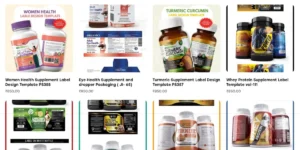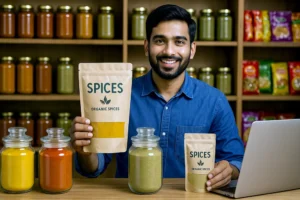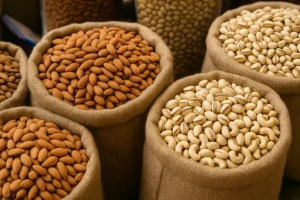The summer outfits business is a highly profitable venture, especially in regions with long summers or tropical climates such as India, the USA, Australia, Africa, and Southeast Asia. With the rise in fashion consciousness and online shopping trends, lightweight and breathable clothing is in constant demand.
This guide will explore:
✅ Market potential
✅ Profit margins
✅ Business models
✅ Challenges & solutions
✅ Step-by-step setup
1. Market Potential for Summer Outfits Business
Global & Indian Market Trends
- The global summer apparel market is expected to grow significantly due to rising demand for comfortable and breathable fabrics.
- In India, summer lasts 6–9 months in most regions, making lightweight clothing a year-round necessity.
- Urbanization & fashion influence drive demand for seasonal clothing collections.
Consumer Behavior & Trends
- Young adults (18-35 years) are the primary buyers of trendy summer wear.
- Eco-conscious shopping is increasing, making organic cotton, linen, and bamboo fabrics popular choices.
- Social media influencers & celebrities significantly impact summer fashion trends.
Types of Best-Selling Summer Clothing
| Category | Popular Items | Fabric Type |
| Casual Wear | T-shirts, Tank tops, Shorts | Cotton, Rayon, Linen |
| Ethnic Wear | Cotton Kurtis, Kaftans | Handloom, Khadi, Muslin |
| Vacation Wear | Sundresses, Beachwear, Sarongs | Chiffon, Linen, Silk blends |
| Athleisure | Gym tanks, Yoga leggings | Polyester, Spandex, Dri-Fit |
| Kidswear | Cotton Frocks, Shorts | Soft Cotton, Bamboo Fabric |
2. Profit Margins & Revenue Potential
Profit Margins in Summer Clothing Business
| Business Model | Cost Price per Unit (₹) | Selling Price per Unit (₹) | Profit Margin (%) |
| Dropshipping | ₹300-600 | ₹600-1,200 | 40-60% |
| Private Label (Own Brand) | ₹400-800 | ₹1,000-2,500 | 50-70% |
| Luxury Summer Wear | ₹800-1,500 | ₹3,000-6,000 | 100-300% |
Projected Monthly Earnings (Example Calculation)
If you sell 500 summer outfits per month at an average profit of ₹500 per unit:
₹500 × 500 = ₹2,50,000 profit per month
3. Best Business Models for Summer Wear
A) Dropshipping (Zero Inventory)
- You list products from suppliers (like AliExpress, Meesho, or Indian manufacturers) on your store.
- Supplier ships directly to customers.
- Pros: No inventory cost, low-risk.
- Cons: Lower control over quality and delivery speed.
B) Private Label (Own Brand)
- Design and source customized summer wear from manufacturers.
- Sell under your own brand name on Amazon, Flipkart, or Shopify.
- Pros: High profits, brand recognition.
- Cons: Requires initial investment in branding.
C) Wholesale & Bulk Selling
- Buy in bulk from Indian textile hubs like Surat, Jaipur, Tirupur, Ludhiana.
- Sell to retailers, boutique owners, and eCommerce sellers.
- Pros: Bulk profits, fewer marketing costs.
- Cons: Requires a larger warehouse and capital.
D) Boutique Store (Offline + Online)
- Open a physical store + integrate with Instagram & WhatsApp Business.
- Best for customized summer wear like block prints, organic cotton fashion, or sustainable clothing.
- Pros: Strong customer relationships, higher pricing power.
- Cons: Location-dependent sales.
4. Challenges & Solutions in Summer Outfit Business
| Challenge | Solution |
| Seasonal Demand | Offer year-round fashion collections, including layering options. |
| High Competition | Differentiate with unique designs, influencer marketing, and eco-friendly options. |
| Inventory Management | Start with pre-orders or dropshipping to reduce unsold stock. |
| Fabric Sourcing Issues | Partner with reliable suppliers in India (Surat, Tirupur, Jaipur, Mumbai). |
| Returns & Exchanges | Implement strict size charts & quality control to reduce return rates. |
5. Step-by-Step Guide to Starting a Summer Outfits Business
Step 1: Market Research & Niche Selection
- Identify your target audience (Men, Women, Kids, Ethnic, or Western).
- Analyze your competition (Amazon, Myntra, Instagram boutiques).
- Choose a USP (Unique Selling Proposition) – e.g., eco-friendly fabrics, budget-friendly fashion, or premium designs.
Step 2: Source Your Products
✅ Wholesale Markets:
- Surat, Jaipur (Cotton & Ethnic)
- Tirupur (T-shirts & Activewear)
- Mumbai, Delhi (Fashion Hubs)
✅ Manufacturers:
- Local textile factories
- AliExpress & IndiaMART suppliers
✅ Dropshipping Suppliers:
- Meesho, GlowRoad, Printful
Step 3: Create an Online Store & Social Media Presence
- Platforms to Sell:
- Shopify, WooCommerce, Amazon, Flipkart, Myntra
- Instagram, WhatsApp Business
- Marketing Strategies:
✅ Influencer & Instagram Marketing
✅ Facebook & Google Ads
✅ SEO-Optimized Website & Blog
Step 4: Logistics & Delivery Setup
- Use courier services like Shiprocket, Delhivery, or India Post.
- Offer Cash on Delivery (COD) for Indian customers.
Step 5: Branding & Customer Engagement
- Invest in good packaging with eco-friendly wrapping.
- Offer loyalty discounts & seasonal sales to retain customers.
6. Final Verdict: Is Summer Outfit Business Profitable?
✅ YES! The summer clothing business can be highly profitable with:
✔ Low startup costs (dropshipping or wholesale model)
✔ High demand due to long summers
✔ Strong online sales potential
Best Model to Start:
- Budget-Friendly: Dropshipping via Meesho or Printful
- Medium-Scale: Private label brand via Amazon & Flipkart
- Large-Scale: Own manufacturing or retail outlet








4 Responses